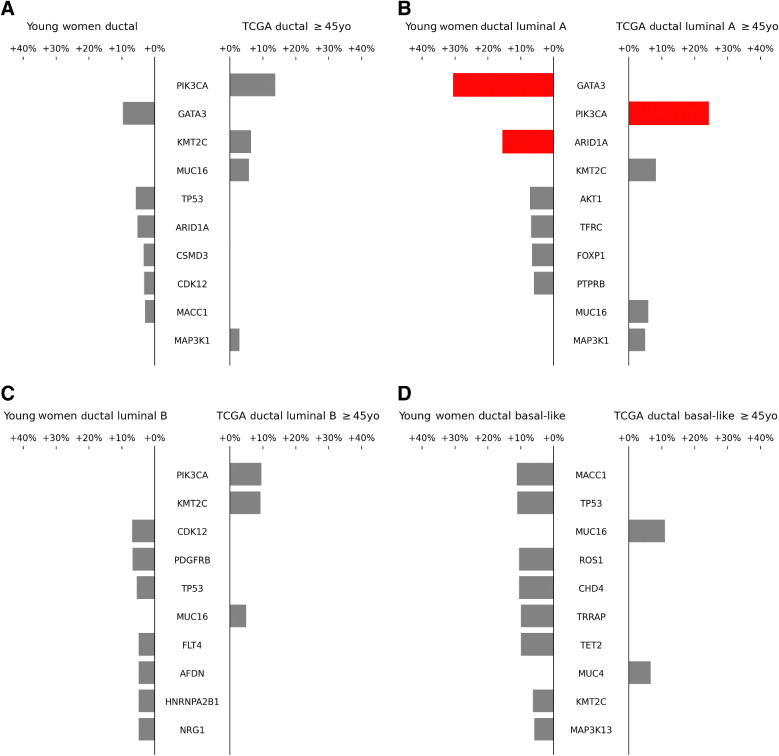Figure 2.
Comparison of single nucleotide and short indel prevalence between Young Women's Breast Cancer Study cohort (≤35 years old) and TCGA patients ≥45 years old. A, All intrinsic subtypes; B, Luminal A; C, Luminal B; D, Basal-like. HER2-enriched subtype is not shown as there were only 4 Young Women's Breast Cancer Study cohort samples in this subtype. Analysis excluded patients with pure lobular tumor histology. Forty genes identified from the 2016 METABRIC study (35), in addition to one gene found to be significant by MutSig, were included for analysis. Only differences in the frequencies of alteration of each gene between the two cohorts, as opposed to the absolute frequency of alterations within each cohort, are depicted by the bars. Statistically significant differences (FDR < 5%) are highlighted in red.

